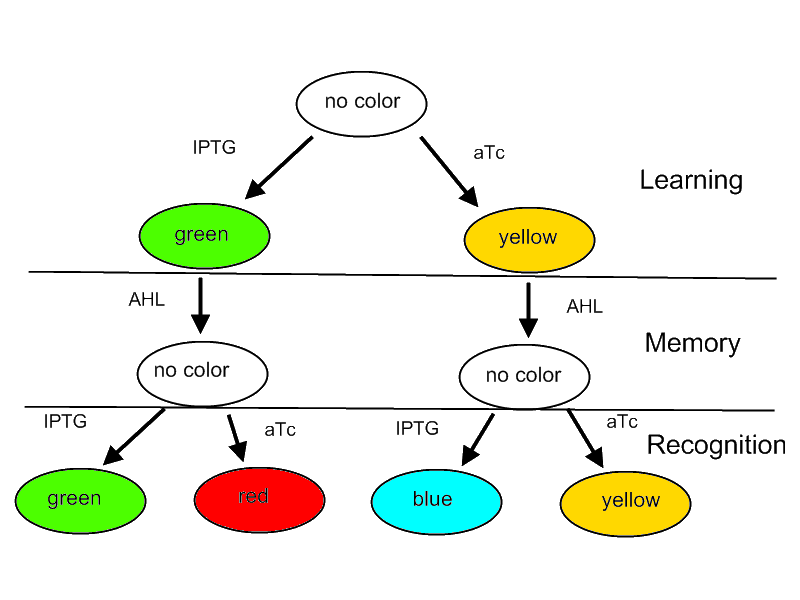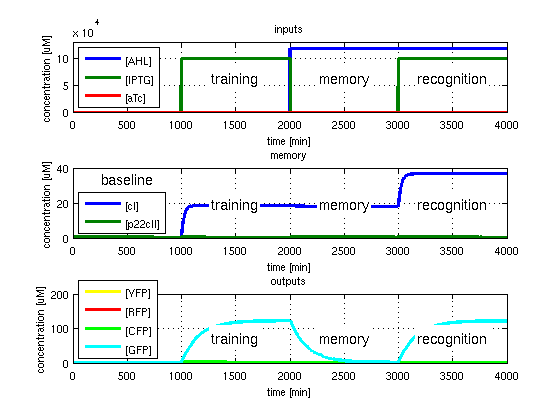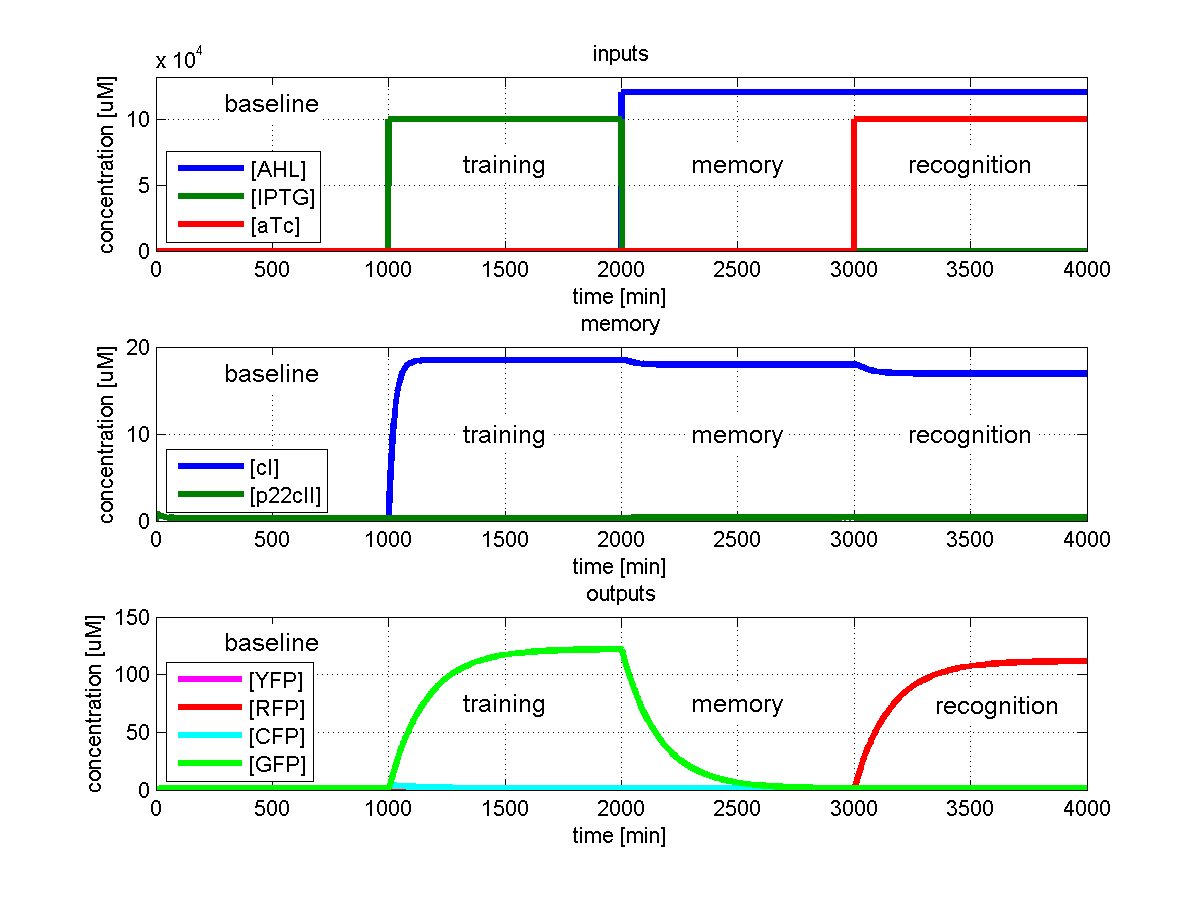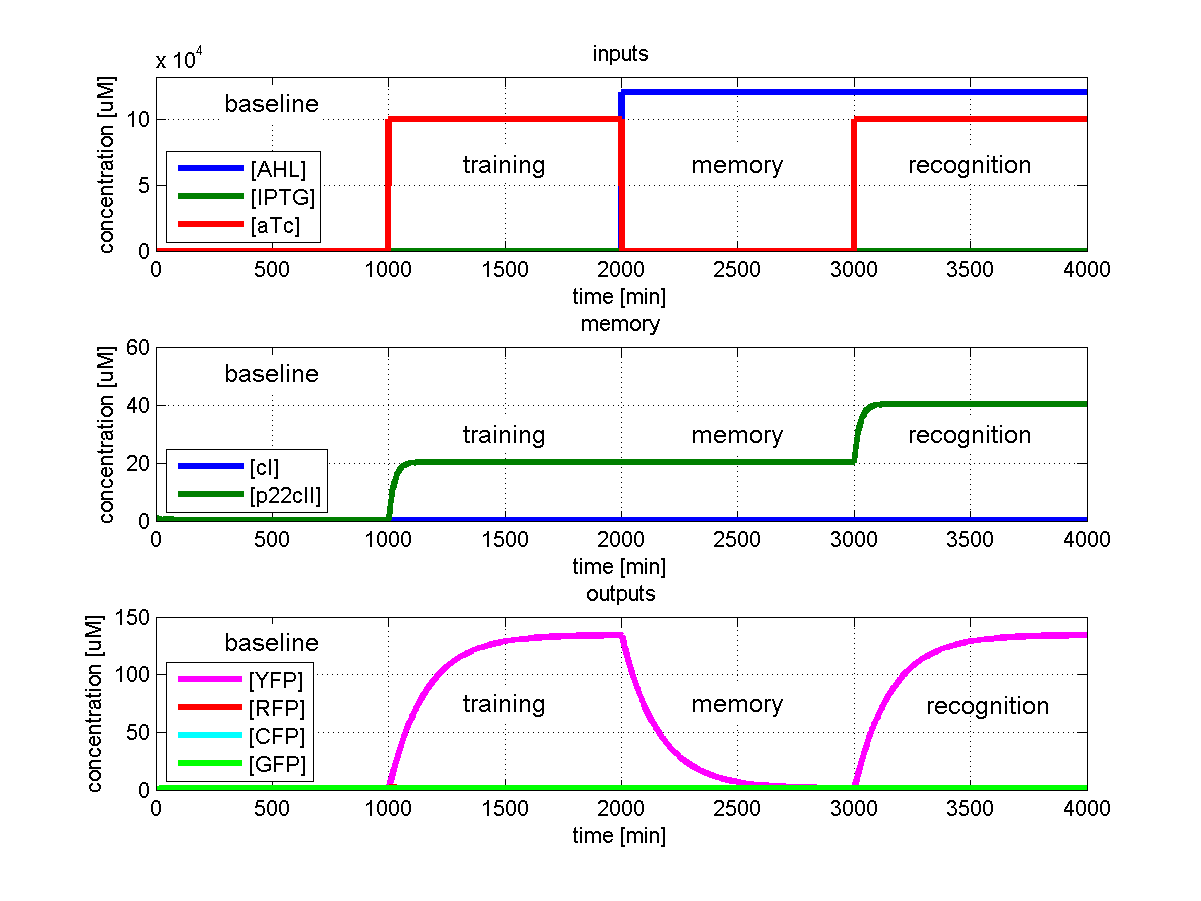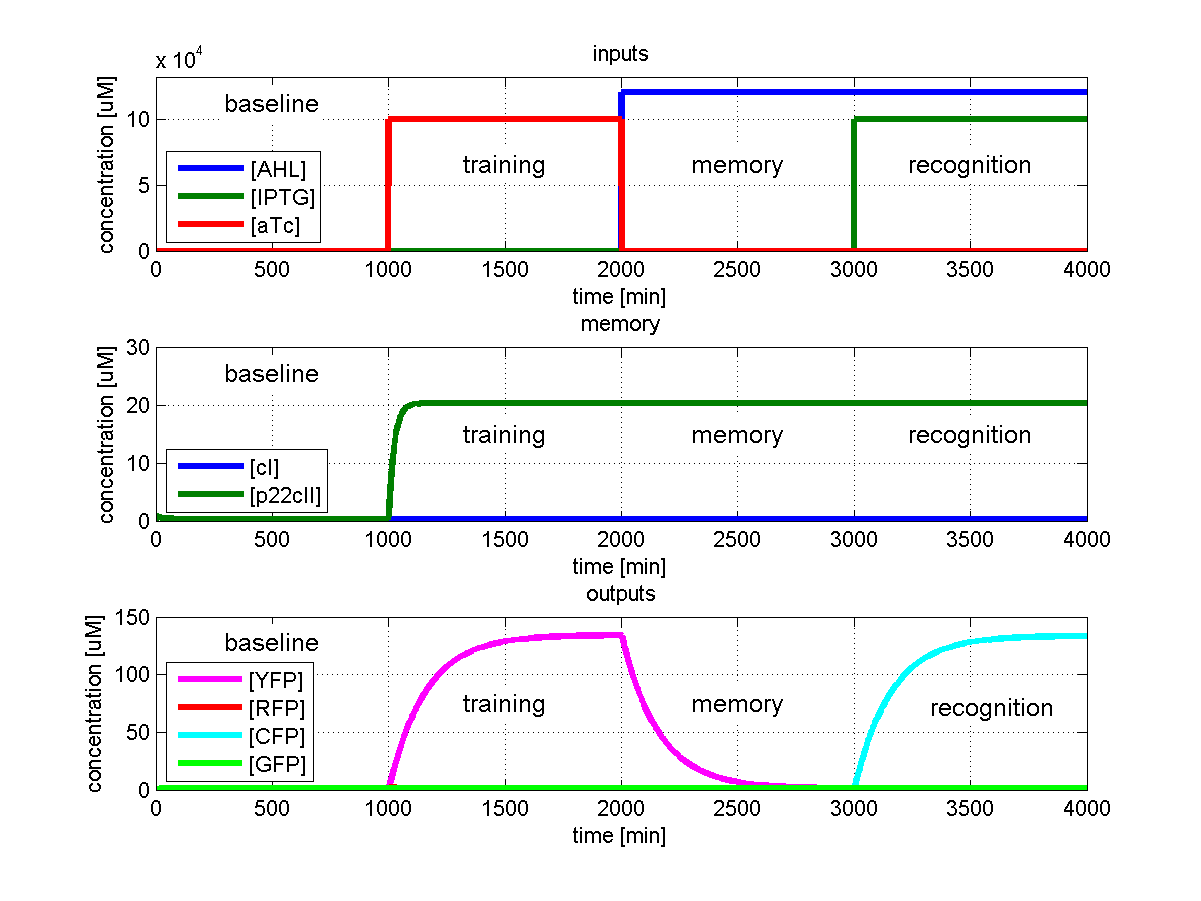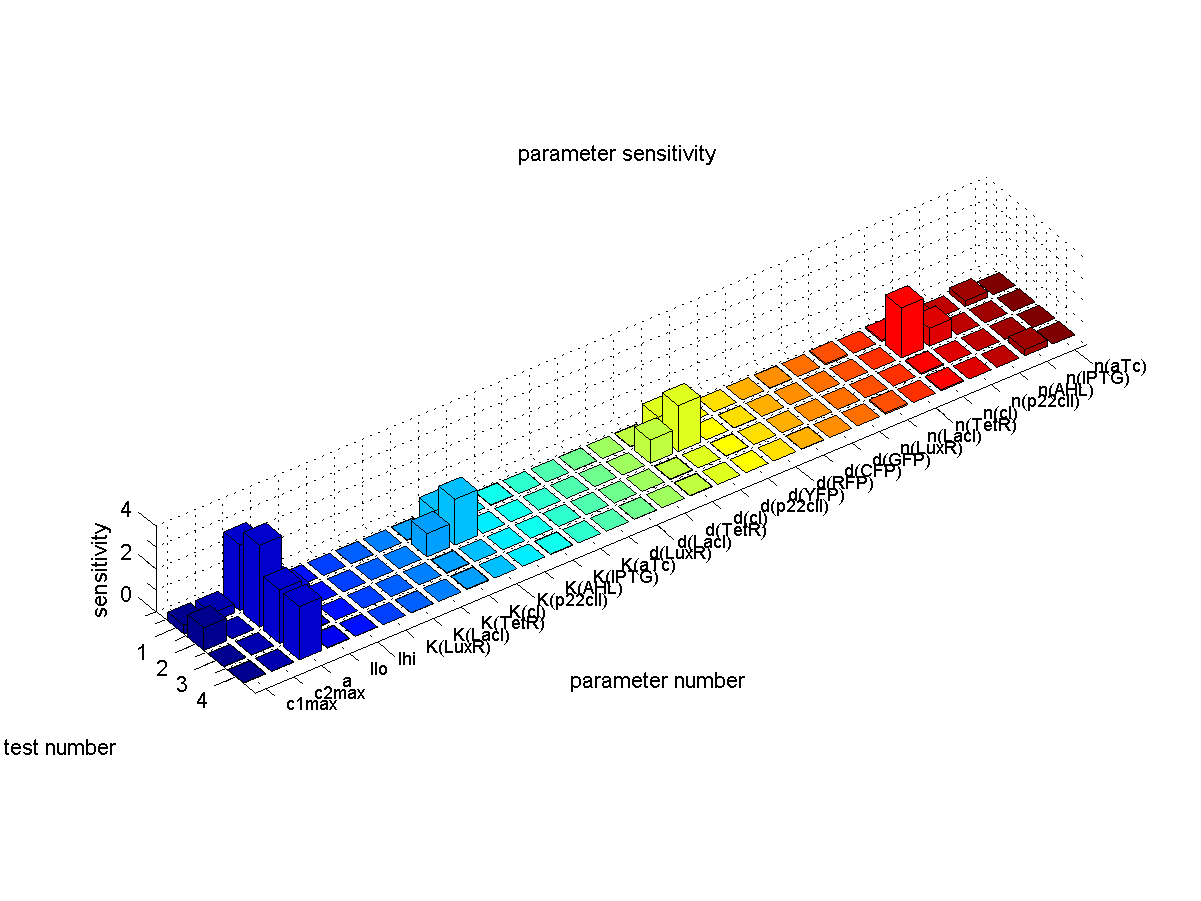ETHZ/Simulation
From 2007.igem.org
(Difference between revisions)
(→Simulation of Test Cases) |
|||
| Line 4: | Line 4: | ||
== Simulation of Test Cases == | == Simulation of Test Cases == | ||
| + | To test for all conditions we run timing simulations for all 4 different branches in the flow diagram of our protocol. | ||
| + | * During the first 1000 minutes of the simulation we did not add any inducers to the system to check for the baseline production of proteins. | ||
| + | * Between 1000 and 2000 minutes we added the inducer that should be learned and let the system reach steady state. | ||
| + | * After the 2000<high>th</high> minute and 3000 minutes | ||
==== Test 1 ==== | ==== Test 1 ==== | ||
Revision as of 11:30, 15 October 2007
Contents |
Protocol
Simulation of Test Cases
To test for all conditions we run timing simulations for all 4 different branches in the flow diagram of our protocol.
- During the first 1000 minutes of the simulation we did not add any inducers to the system to check for the baseline production of proteins.
- Between 1000 and 2000 minutes we added the inducer that should be learned and let the system reach steady state.
- After the 2000<high>th</high> minute and 3000 minutes
Test 1
Test 2
Test 3
Test 4
Sensitivity Analysis
For a system like our is is not enough to find a set of parameters for which it is working. To provide a stable performance also in the presence of noise and parameter missmatch we were interested in analysing the sensitivity of the system.
The results are plotted in Figure 5.
